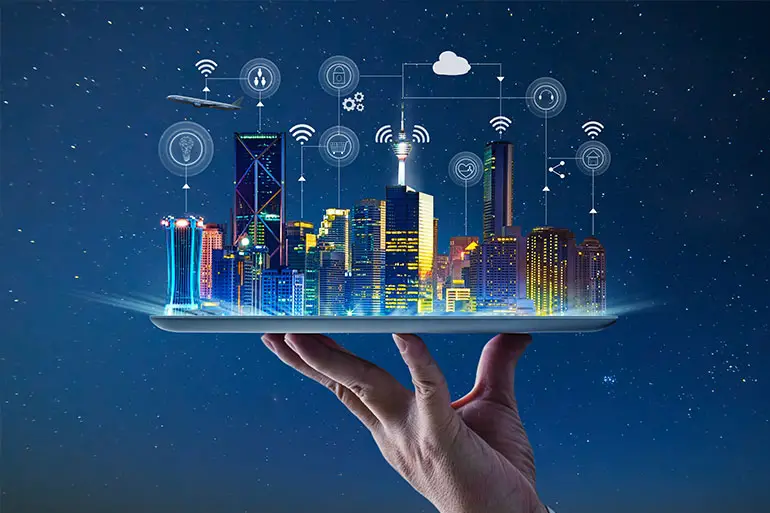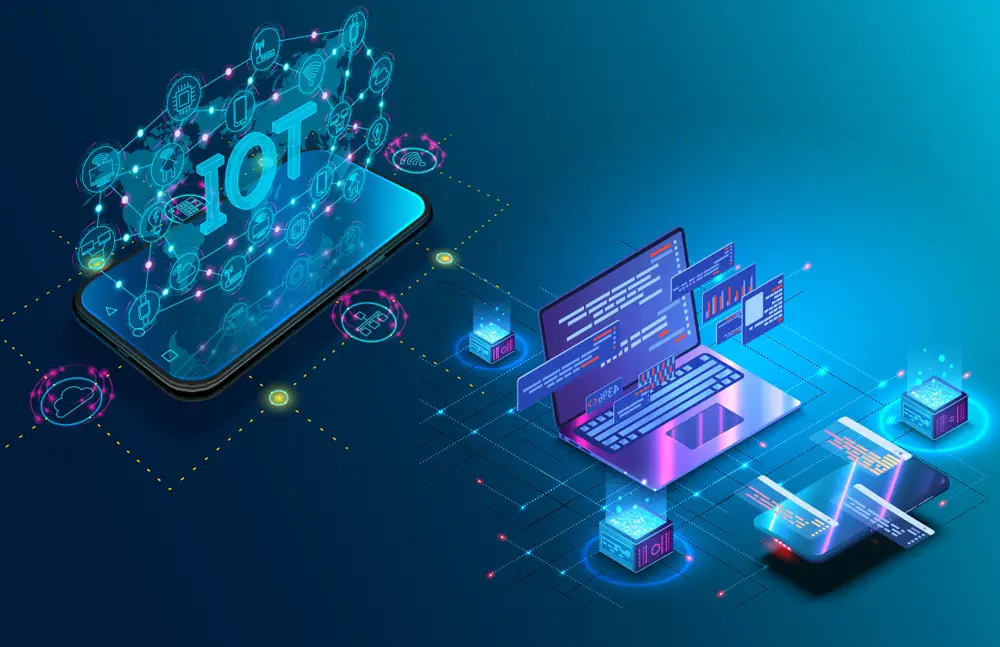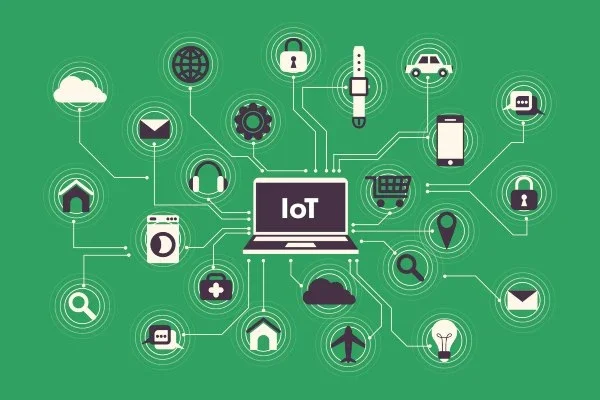In recent years, the development of IoT applications has become a hot topic in the tech industry. The need for IoT applications is rising as a consequence of the growing popularity of smart homes and cities as well as the number of connected devices.
In this article, we will explore what IoT is, why such applications are gaining popularity, why people should develop iot applications, types of IoT applications, and their usage.
What is IoT?
IoT, or the Internet of Things, refers to the interconnectivity of devices through the Internet, allowing them to communicate with each other and share data. These gadgets, which can be anything from tiny sensors to massive machinery, are used in a variety of fields such as healthcare, manufacturing, transportation, etc. IoT’s primary objectives are to increase productivity, automate procedures, and make data-driven decisions.
Why are IoT Applications Gaining Popularity?
The popularity of IoT applications can be attributed to their ability to streamline processes, reduce costs, and enhance user experiences. Wearable technology that tracks fitness and health as well as smart home systems that regulate lighting, temperature, and security are just a few examples of the many uses for IoT technology. These gadgets collect data, so it can be studied and used to make decisions that increase productivity and efficiency.
Types of IoT Apps
They can be categorized into three main types: consumer, enterprise, and industrial.
Consumer applications are intended for personal use and include devices such as smart speakers, fitness trackers, and home automation systems. These applications improve convenience and enhance the user experience.
Enterprise applications are designed for businesses and can include asset tracking systems, supply chain management tools, and building automation systems. By automating procedures and enhancing data collecting, these applications increase efficiency and lower costs.
Industrial applications are designed for large-scale operations and can include systems such as remote monitoring and predictive maintenance tools. These apps enhance security, lessen downtime, and boost efficiency.
Areas of IoT Application

IoT apps can be used in a variety of areas, including:
Healthcare: Here IoT devices are implemented to monitor patients’ vital signs and track medication usage, allowing for more personalized and efficient care.
Agriculture: By monitoring soil moisture, temperature, and nutrient levels, the device can help increase crop yields and reduce waste.
Transportation: IoT devices can be used to track vehicles and plan routes, which will greatly reduce fuel use and speed up deliveries.
Energy: the devices are also used to improve systems and monitor energy use, which lowers costs and increases productivity.
Why Should Developers Think about Developing an IoT Application?
Developers should consider developing IoT applications for several reasons:
Increasing Demand: The demand for these applications is rapidly increasing as more and more businesses and individuals realize the advantages of IoT technology. By developing IoT applications, developers can tap into a growing market and potentially reach a wider audience.
New Opportunities: IoT technology is constantly evolving, creating new opportunities for developers to innovate and create new applications. As IoT technology continues to advance, developers can stay ahead of the curve by exploring new possibilities and creating cutting-edge applications.
Enhanced Efficiency: In a variety of industries, IoT applications can automate procedures, cut costs, and increase productivity. The supply chain management, energy use, and transportation are just a few of the processes that developers may greatly enhance by creating IoT apps.
Improved User Experience: IoT applications can enhance the user experience by providing personalized, data-driven solutions that meet specific needs. By developing IoT applications, developers can create more tailored experiences that better meet the needs of their users.
Competitive Advantage: By developing innovative IoT applications, developers can gain a competitive advantage in the market. IoT technology is still relatively new, so developers who are able to create unique and effective solutions can differentiate themselves from their competitors.
Overall, developing IoT applications presents a valuable opportunity for developers to tap into a growing market, explore new possibilities, and contribute to the optimization of various industries. Developers may produce cutting-edge solutions that boost productivity, improve user experience, and gain a market lead by implementing IoT technology.
Main Points in the Development of an IoT App
Developing an IoT application involves several stages. To make sure their application is efficient, reliable, and safe, developers must take into account the specific requirements and difficulties of IoT technology at each step. The following are some of the main points to consider in the development of such an application:
Stages of Development
Planning: The first stage involves defining the scope of the application, identifying user needs, and selecting the appropriate IoT platform and technologies.
Design: In this step, the architecture, user interface, and functionality of the app are all thoughtfully designed. It is also established how the application will get and use data from IoT devices.
Development: Coding the application and integrating it with the IoT platform and devices are both tasks that are included in this step.
Testing: The application’s performance, security, and functionality are all tested at this phase. To make sure the program is reliable and secure, it must be properly tested across a range of platforms and scenarios.
Deployment: The application is put into production and tested to make sure everything is running smoothly.
Technologies Used
The creation of IoT applications involves the use of numerous technologies, including IoT platforms, cloud computing, big data analytics, and machine learning. The infrastructure for connecting and managing IoT devices is provided by IoT platforms, while the scalability and flexibility required to process huge amounts of data provided by cloud computing. The data gathered by IoT devices is analyzed and insights are drawn using big data analytics and machine learning.
Risks
Developing IoT applications comes with certain risks, including security vulnerabilities, privacy concerns, and compatibility issues. Because IoT devices are frequently subject to cyberattacks, it is crucial for developers to have security protocols in place to protect confidential information. The collection and sharing of personal data by IoT devices raises privacy issues, so it is crucial for developers to make sure their applications abide with privacy laws. Compatibility issues can also arise when integrating multiple IoT devices and platforms, and it is important for developers to test their applications thoroughly to ensure compatibility and interoperability.
Overall, developing an IoT application involves several stages, including planning, design, development, testing, and deployment. IoT platforms, cloud computing, big data analytics, and machine learning are just a few of the technologies that developers use. It is important to consider the unique challenges and risks associated with IoT technology, including security vulnerabilities, privacy concerns, and compatibility issues. By carefully considering these factors, developers can create effective, reliable, and secure IoT applications.
Conclusion

The development of IoT applications presents both opportunities and challenges for developers. Developers should consider developing IoT apps to enter this advancing industry given the rising demand for IoT technology and the possibility for increased effectiveness, improved user experience, and competitive advantage.
However, developers must also consider the unique challenges and risks associated with IoT technology, such as security vulnerabilities, privacy concerns, and compatibility issues. By carefully planning, designing, developing, testing, and deploying their applications, and leveraging the appropriate technologies, developers can create effective, reliable, and secure IoT applications that meet the needs of their users and contribute to the optimization of various industries.


















